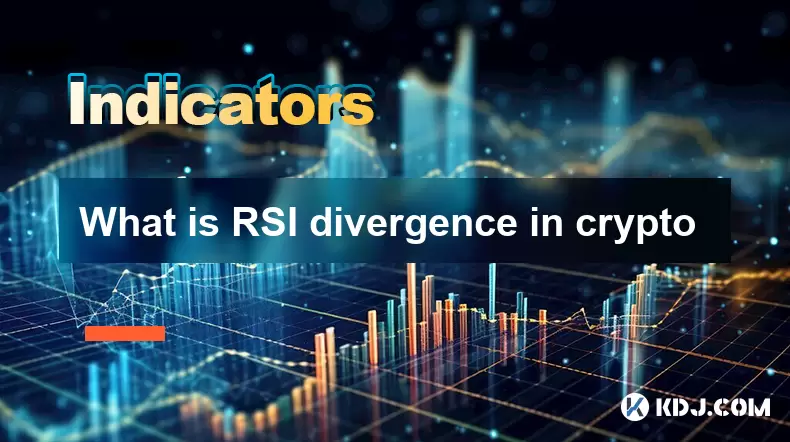-
 Bitcoin
Bitcoin $117,462.8204
-2.03% -
 Ethereum
Ethereum $3,061.1595
1.10% -
 XRP
XRP $2.9139
-2.19% -
 Tether USDt
Tether USDt $1.0002
0.02% -
 BNB
BNB $685.1357
-1.24% -
 Solana
Solana $161.3803
-2.11% -
 USDC
USDC $1.0002
0.04% -
 Dogecoin
Dogecoin $0.1948
-2.92% -
 TRON
TRON $0.2987
-0.89% -
 Cardano
Cardano $0.7330
-1.27% -
 Hyperliquid
Hyperliquid $47.7888
0.13% -
 Stellar
Stellar $0.4514
-2.93% -
 Sui
Sui $4.0169
2.74% -
 Chainlink
Chainlink $15.7088
-2.57% -
 Hedera
Hedera $0.2356
-3.33% -
 Bitcoin Cash
Bitcoin Cash $488.6656
-3.61% -
 Avalanche
Avalanche $21.2955
-1.47% -
 UNUS SED LEO
UNUS SED LEO $9.0415
0.42% -
 Shiba Inu
Shiba Inu $0.0...01332
-0.82% -
 Toncoin
Toncoin $3.0124
-0.62% -
 Litecoin
Litecoin $94.2175
-2.07% -
 Polkadot
Polkadot $4.0011
-0.61% -
 Monero
Monero $333.5714
-3.46% -
 Uniswap
Uniswap $9.1114
-1.56% -
 Dai
Dai $1.0000
0.02% -
 Ethena USDe
Ethena USDe $1.0005
0.00% -
 Bitget Token
Bitget Token $4.4951
1.87% -
 Pepe
Pepe $0.0...01242
0.47% -
 Aave
Aave $321.9943
0.51% -
 Bittensor
Bittensor $434.1984
5.13%
What is RSI divergence in crypto
RSI divergence helps crypto traders spot potential price reversals by comparing price action with RSI oscillator readings.
Jul 15, 2025 at 01:00 am

Understanding RSI Divergence in Cryptocurrency Trading
RSI divergence, or Relative Strength Index divergence, is a technical analysis concept commonly used by traders to spot potential reversals in asset prices. In the context of cryptocurrency, where price volatility is high and market sentiment shifts rapidly, understanding RSI divergence can provide valuable insights into trend strength and possible reversal points.
The Relative Strength Index (RSI) is an oscillator that measures the speed and change of price movements on a scale from 0 to 100. Typically, values above 70 suggest overbought conditions, while values below 30 indicate oversold conditions. However, when price action and RSI readings do not align, it results in what's known as divergence—a powerful signal for traders.
Types of RSI Divergence
There are two main types of RSI divergence relevant to crypto traders: regular divergence and hidden divergence.
Regular Divergence: This occurs when the price makes a new high or low, but the RSI does not confirm it.
- Bullish Regular Divergence: Price makes a lower low, but RSI makes a higher low.
- Bearish Regular Divergence: Price makes a higher high, but RSI makes a lower high.
Hidden Divergence: This type often signals continuation rather than reversal.
- Bullish Hidden Divergence: Price makes a higher low, but RSI makes a lower low.
- Bearish Hidden Divergence: Price makes a lower high, but RSI makes a higher high.
Identifying these types accurately can help traders anticipate potential changes in price direction before they fully manifest.
How to Spot RSI Divergence in Crypto Charts
To effectively identify RSI divergence, you need to compare the movement of the price chart with the corresponding RSI indicator. Here’s how to do it step-by-step:
- Add RSI to your chart: Most trading platforms allow you to add RSI as an overlay indicator. The standard setting is 14 periods.
- Look for swing highs and lows: Identify at least two significant swing points on the price chart.
- Compare price swings with RSI peaks/troughs: If the price makes a new high but the RSI doesn’t, you may have a bearish divergence. Conversely, if the price makes a new low but RSI doesn’t, it could be bullish divergence.
- Draw trendlines on RSI: Drawing trendlines on the RSI can help visualize divergences more clearly.
- Confirm with volume or candlestick patterns: Use additional tools like volume indicators or candlestick formations to validate the divergence signal.
This method works best on higher timeframes such as 4-hour or daily charts due to fewer false signals compared to shorter intervals.
Using RSI Divergence in Crypto Trading Strategies
Incorporating RSI divergence into a trading strategy requires careful planning and risk management. Here are some practical ways to use it:
- Entry Signal: When a bullish divergence is confirmed, consider entering a long position once the price breaks above a recent resistance level. For bearish divergence, look for shorting opportunities after a breakdown below key support.
- Stop-Loss Placement: Always place stop-loss orders just beyond the most recent swing point to manage risk effectively.
- Take Profit Targets: Use Fibonacci retracement levels or previous swing highs/lows to determine realistic profit targets.
- Combine with Moving Averages: Adding moving averages like the 50 or 200 EMA can help filter out false signals and confirm trend direction.
- Use Multiple Timeframe Analysis: Confirm divergence signals on multiple timeframes to increase accuracy.
Traders should backtest their strategies using historical data before applying them in live markets.
Common Mistakes When Using RSI Divergence
While RSI divergence is a powerful tool, many traders make common mistakes that reduce its effectiveness:
- Ignoring Trend Context: Applying divergence signals without considering the broader trend can lead to poor decisions. Always assess whether the market is trending or ranging.
- Overtrading Divergence Signals: Not every divergence leads to a reversal. Some signals are weak or occur during strong trends, leading to losses.
- Failing to Use Confirmation Tools: Relying solely on RSI without confirmation from other indicators increases the likelihood of false signals.
- Not Adjusting RSI Settings: While the default setting is 14, some traders tweak it based on asset behavior. Failing to adapt can result in misleading readings.
- Neglecting Risk Management: Even with accurate signals, improper position sizing and lack of stop-loss can lead to significant losses.
Avoiding these pitfalls can significantly improve trade outcomes.
FAQ: Frequently Asked Questions About RSI Divergence in Crypto
Q: Can RSI divergence be used on all cryptocurrencies?
Yes, RSI divergence applies to any tradable asset, including all major cryptocurrencies like Bitcoin, Ethereum, and altcoins. However, it tends to be more reliable in assets with sufficient liquidity and trading volume.
Q: Is RSI divergence a guaranteed reversal signal?
No, RSI divergence is not a guaranteed reversal signal. It only suggests potential weakness in the current trend. Traders must always combine it with other tools for confirmation.
Q: How often does RSI divergence occur in crypto markets?
Given the high volatility of crypto markets, RSI divergence occurs frequently. However, not all instances result in meaningful price reversals. Proper filtering is essential.
Q: What timeframe is best for spotting RSI divergence?
While divergence can appear on any timeframe, higher timeframes such as 4-hour, daily, or weekly charts tend to produce more reliable signals due to reduced noise and fewer false positives.
Disclaimer:info@kdj.com
The information provided is not trading advice. kdj.com does not assume any responsibility for any investments made based on the information provided in this article. Cryptocurrencies are highly volatile and it is highly recommended that you invest with caution after thorough research!
If you believe that the content used on this website infringes your copyright, please contact us immediately (info@kdj.com) and we will delete it promptly.
- Bitcoin, Altcoins, and DeFi: Navigating the Evolving Crypto Landscape
- 2025-07-16 05:30:12
- DeFi Demystified: Navigating the Wild West of Decentralized Finance
- 2025-07-16 04:50:12
- JPMorgan, Stablecoins, and Dimon: A Love-Hate Story?
- 2025-07-16 04:55:12
- Bitcoin's ATH Surge: Exchange Inflows and What They Mean for You, Ya Know?
- 2025-07-16 04:30:12
- PUMP Token Mania on Hyperliquid: Unit Tokenization Takes Center Stage
- 2025-07-16 05:35:12
- Altcoins Awakening: Ethereum's Surge and Bitcoin Dominance Shift
- 2025-07-16 05:50:12
Related knowledge

Advanced RSI strategies for crypto
Jul 13,2025 at 11:01am
Understanding the Basics of RSI in Cryptocurrency TradingThe Relative Strength Index (RSI) is a momentum oscillator used to measure the speed and chan...

Crypto RSI for day trading
Jul 12,2025 at 11:14am
Understanding RSI in the Context of Cryptocurrency TradingThe Relative Strength Index (RSI) is a momentum oscillator used to measure the speed and cha...

Crypto RSI for scalping
Jul 12,2025 at 11:00pm
Understanding RSI in the Context of Crypto TradingThe Relative Strength Index (RSI) is a momentum oscillator widely used by traders to measure the spe...

What does an RSI of 30 mean in crypto
Jul 15,2025 at 07:07pm
Understanding RSI in Cryptocurrency TradingRelative Strength Index (RSI) is a momentum oscillator widely used in cryptocurrency trading to measure the...

What does an RSI of 70 mean in crypto
Jul 13,2025 at 06:07pm
Understanding the RSI Indicator in Cryptocurrency TradingThe Relative Strength Index (RSI) is a widely used technical analysis tool that helps traders...

How to avoid RSI false signals in crypto
Jul 13,2025 at 06:21pm
Understanding RSI and Its Role in Crypto TradingThe Relative Strength Index (RSI) is a momentum oscillator used to measure the speed and change of pri...

Advanced RSI strategies for crypto
Jul 13,2025 at 11:01am
Understanding the Basics of RSI in Cryptocurrency TradingThe Relative Strength Index (RSI) is a momentum oscillator used to measure the speed and chan...

Crypto RSI for day trading
Jul 12,2025 at 11:14am
Understanding RSI in the Context of Cryptocurrency TradingThe Relative Strength Index (RSI) is a momentum oscillator used to measure the speed and cha...

Crypto RSI for scalping
Jul 12,2025 at 11:00pm
Understanding RSI in the Context of Crypto TradingThe Relative Strength Index (RSI) is a momentum oscillator widely used by traders to measure the spe...

What does an RSI of 30 mean in crypto
Jul 15,2025 at 07:07pm
Understanding RSI in Cryptocurrency TradingRelative Strength Index (RSI) is a momentum oscillator widely used in cryptocurrency trading to measure the...

What does an RSI of 70 mean in crypto
Jul 13,2025 at 06:07pm
Understanding the RSI Indicator in Cryptocurrency TradingThe Relative Strength Index (RSI) is a widely used technical analysis tool that helps traders...

How to avoid RSI false signals in crypto
Jul 13,2025 at 06:21pm
Understanding RSI and Its Role in Crypto TradingThe Relative Strength Index (RSI) is a momentum oscillator used to measure the speed and change of pri...
See all articles

























































































